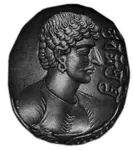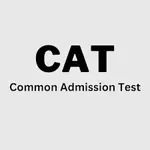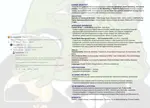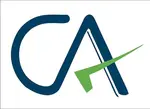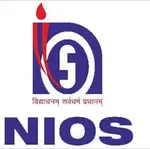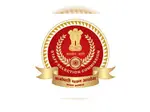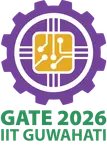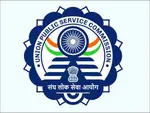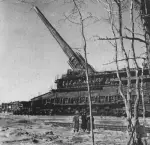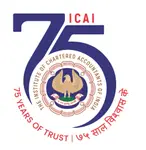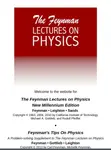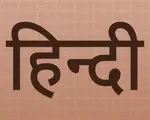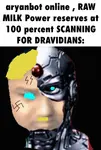Recent Posts
Help krp ananwas
Aryan Invasion Theory of Europe
CAT Exam 2026
Academic Masterstroke
How to ascend
Help me medjeets
GPAchads zara madad karo
ramblings of a BA cel
Please help urgent
UPSC
NIOS
SAMAJHDAAR SARKARI C(KUTTA) = SSC
Any GATEcels here?
I wanna prepare for UPSC next year bhachanners
Where do i even fucking begin? Can anyone tell me which youtube sir i should follow what study material i should order? I suck at ROTE bhachanners theres no fucking way im remembering the history of india, this polity that polity :'(
₹$£¢€¥
>10^-44 probability of clearing jee advanced by random answers acc to ai >one out of 10^44 chance of qualifying >sell book to parents with 10^44 - 1 omr sheets >child fills each page randomly and exhausts every incorrect possibility >child give...
BROOTAL EXAMCEL BPs
post stories, interviews of brootal examcel failures. This is not to laugh, but rather to hopefully spread awareness and I'm sure some of you may end up making edits and make it viral social media https://youtu.be/nJQ9RDQSA8c?si=nLglwJ67IyrkegDO&t=5...
rust
UPSC Engineering Services Thread
Help me anons
help plazz
Jiske laude lage hote hai wahi jaanta hai
SHould i give upsc a try
JEE cooking me
edging maths
Solution of everything
Help for JEE
Cat preparation
earning source help krdo anons...
Help
Guys I need to learn Hindi, can you guys guide me ...
need advice for commie fag
NEED BRUTAL CAREER ADVICE
I can't study.
GPAchads zara madad karo

oRWyZD
No.1074
1 mahine baad endsem exam hai
>1st sem tier3 CSE
zara resources bata do please
9+ SGPA laana hai

oRWyZD
No.1075
Physics
>Unit I
Laplace’s and Poisson’s equations for electrostatic potential and. Boundary conditions of
electric field and electrostatic Potential. Energy of a charge distribution and its expression in
terms of electric field. Solving simple electrostatics problems in presence of dielectrics – Point
charge at the centre of a dielectric sphere, Bio-Savart law, Divergence and curl of static
magnetic field; Magnetization magnetic susceptibility and ferromagnetic, paramagnetic and
diamagnetic materials. Faraday’s law in terms of EMF produced by changing magnetic flux,
Lenz’s law. Differential form of Faraday’s law Displacement current and Maxwell’s equations,
Learn about traditional Indian methods of measurement, early knowledge of metals and
materials, sky observation in Indian astronomy, and ancient timekeeping tools like
sundials and water clocks.
>Unit II
Introduction to Quantum mechanics, Wave nature of Particles, Time-dependent and time
independent Schrodinger equation for wave function, Uncertainty principle. Solution of
stationary-state Schrodinger equation for one dimensional problems– particle in a box, particle
in three dimensional box.
>Unit III
Scalars and vectors Forces in Nature; Newton’s laws and its completeness in describing particle
motion; Form invariance of Newton’s Second Law; Solving Newton’s equations of motion in
polar coordinates; F = - Grad V; Definition and motion of a rigid body in the plane; Rotation
in he plane; Kinematics in a coordinate system rotating and translating in the plane; Angular
momentum about a point of a rigid body in planar motion; Euler’s laws of motion, their
independence from Newton’s laws, and their necessity in describing rigid body motion;
Examples.
>Unit IV
Mechanical and electrical simple harmonic oscillators. Brewster’s Law, total internal
reflection, Mirrors & lenses and optical instruments based on them. Amplification of light by
population inversion, different types of lasers: gas lasers ( He-Ne), solid-state lasers (ruby
Laser).Properties of laser beams, applications of lasers in science, engineering and medicine.
>Unit V
P-N junction, Metal-semiconductor junction (Ohmic and Schottky); Carrier transport,
generation, and recombination; Semiconductor materials of interest for optoelectronic devices.
Rates of optical transitions LED: device structure, materials, characteristics, and figures of
merit. Types of semiconductor photodetectors -p-n junction, PIN, and Avalanche.

oRWyZD
No.1076
Maths
>Unit I
Matrices:
System of linear equations; rank of a matrix, rank-nullity theorem; Symmetric, skew symmetric
and orthogonal matrices; Eigen values and eigenvectors; Diagonalization of matrices; Cayley-
Hamilton Theorem, and Orthogonal transformation; Cramer’s rule,
Explore ancient Indian number systems, early use of trigonometry in astronomy, and
algebraic techniques developed by Indian mathematicians.
>Unit II
Calculus:
Rolle’s Theorem, Mean value theorems, Taylor’s and Maclaurin theorems with remainders;
indeterminate forms and Hospital’s rule, Evaluation of definite and improper integrals; Beta and
Gamma functions and their properties.
>Unit III
Multivariable Calculus (Differentiation):
Partial derivatives, directional derivatives, total derivative; Tangent plane and normal line;
Maxima, minima and saddle points, Method of Lagrange multipliers.
>Unit IV
Multivariable Calculus (Integration):
Multiple Integration: Double integrals (Cartesian), change of order of integration in double
integrals, change of variables (Cartesian to polar), Applications: areas and volumes, Triple
integrals (Cartesian), orthogonal curvilinear coordinates, Simple applications involving cubes
and sphere.
>Unit V
Sequences and series:
Convergence of sequence and series, tests for convergence; Power series, Taylor's series, series
for exponential, trigonometric and Logarithm functions; Fourier series: Half range sine and
cosine series, Parseval’s theorem.

oRWyZD
No.1077
Basic Electrical Engineering
>Unit I
D.C. Circuits
Electrical circuit elements (R, L and C), voltage and current sources, Kirchoff current and
voltage laws, analysis of simple circuits with dc excitation. Superposition, Thevenin and
Norton Theorems. Time-domain analysis of first-order RL and RC circuits, Understand how
ancient Indian texts described energy and electricity, including natural phenomena like
lightning and static electricity.
>Unit II
A.C. Circuits
Representation of sinusoidal waveforms, peak and rms values, phasor representation, real
power, reactive power, apparent power, power factor, Analysis of single-phase ac circuits
consisting of R, L, C, RL, RC, RLC combinations (series and parallel), resonance. Three-phase
balanced circuits, voltage and current relations in star and delta connections.
>Unit III
Transformers
Magnetic materials, BH characteristics, ideal and practical transformer, equivalent circuit,
losses in transformers, regulation and efficiency. Auto-transformer and three-phase transformer
connections.
>Unit IV
Electrical Machines
Generation of rotating magnetic fields, Construction and working of a three-phase induction
motor, Significance of torque-slip characteristic. Loss components and efficiency, starting and
speed control of induction motor. Single-phase induction motor. Construction, working, torque-
speed characteristic and speed control of separately excited dc motor. Construction and
working of synchronous generators.
>Unit V
Power Converters
DC-DC buck and boost converters, duty ratio control. Single-phase and three-phase voltage
source inverters; sinusoidal modulation.
>Unit VI
Electrical Installations
Components of LT Switchgear: Switch Fuse Unit (SFU), MCB, ELCB, MCCB, Types of Wires
and Cables, Earthing. Types of Batteries, Important Characteristics for Batteries. Elementary
calculations for energy consumption, power factor improvement and battery backup.

oRWyZD
No.1078
I already know NESO Academy, but idk about other channels.
please anamas, madad karo, nahi toh papa Railway mein Ticket Clerk mein bhej denge

pG3S3w
No.1089
>>1078
Cheating krle pajeet. Padh ke kisi ka bhala nhi hua

DrsSEt
No.1090
check pyqs and study those questions
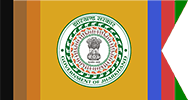
oRWyZD
No.1092
AAAAAAAAAAAAAAAAAAAAAAAAAA
I'M TIRED OF THIS SHIT
THIS IS NOW MY DAILY DIARY
EVERY NIGHT I WILL POST WHAT I DID
WHETHER I STUDIED, JERKED OFF OR ATE GOYSLOP
FUCK THIS SHIT

bFP7dJ
No.1095

oRWyZD
No.1096
>>1095
>college professor's notes
that (by the way I am a nigger) is retarded. he doesn't know how to teach.
>PYQs
yeah, that is obvious. I'm talking which lectures to cover the syllabus from. or do i just selectively solve PYQs and cover those topics ? will that be enough ?

YGt/Pf
No.1097
>>1096
>that (by the way I am a (by the way I am a nigger)) is retarded. he doesn't know how to teach.
Not talking about the notes you make after their teaching rather actual professor's notes - that professor uses if you can get your hands on them then great.
Otherwise you gotta skim through PYQs, check important topics. Check syllabus and do the needful.
Another option is find some youtuber bhaiya didi but mostly limit those for core concepts.

tBIEH0
No.1098
>>1096
just learn to consoom the textbook heendu

oRWyZD
No.1103
blaady forgot to update
Did
>Rolle's Theorem
>LMVT
yesterday
and a few practice problems
socha tha raat 3 baje tak padhunga
bc itni thand hai neend aa gyi
mushkil se 1-1.5 ghante padha hunga
AAAAAAAAAAAAAAAAAAAAA
EXAMS ARE NEXT MONTH
NEED TO LOCK THE FUCK IN

gfklm1
No.1105
Fucked up my engineering drawing paper so bad few days ago.

t77ybQ
No.1108

i6QFB5
No.1109
>>1108
Must be tuff for this fresherfag, I only study a day before and in library on the day of exam.

4+5sGJ
No.1110
>>1109
Kek i have bcom with ca, when I was prepping for inter i completed my whole kalej syllabus in 1st year itself. Now I don't have to study anything

4jC5E2
No.1111
>>1109
But even for freshers, if he's in a good kalej that means he doesn't need to because he's good at studies. If he's not which means he's in tier 3 in which he doesn't need to study 1 blaady month before eggjams

oRWyZD
No.1115
last two classes got cancelled, i have about 2 hours free, but I'm not going to the library to study. I'll just sit in the fields. i feel kinda guilty but i really don't feel like studying rn.
>>1110
commercechads ki maa ka bhosda
saari bandiyan le jaate hain

oRWyZD
No.1116
looks like it's harvesting season.

W87Fq8
No.1120
>>1115
It's not like that for CAcells, I took clg because I could (DU). Most CA chuds don't opt for regular kalej and spend their entire 20s trying to pass CA . Miserable people

l8F5hJ
No.1136
Retard
Just extrapolate the topics that come from pyqs and do them with chatgpt or any other llm
Dont waste your time behind bs and do some actual learning




